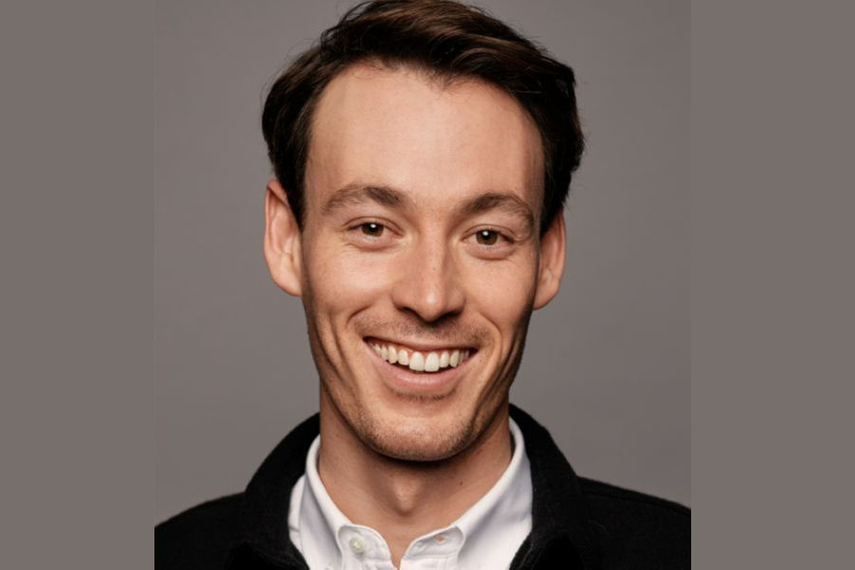
One of the greatest challenges advertisers face today is reaching the right audiences. While a brand can expand its reach to become well-known, it might not necessarily result in engagement unless the campaign resonates with the right people.
Marketers and ad agencies are increasingly tasked with delivering value to their audiences while also driving engagement and supporting business growth by cultivating brand loyalty through interactive campaigns. Creating visually compelling campaigns is one way to do so and there’s a clear demand for investing in those that can drive business growth.
A recent study that MMA Global conducted with Canva found that 77% of senior marketers believe it’s never been more critical than now to invest in creative output. This is where Canva feels it can lend a helping hand, or a bunch of tech tools, as the case may be.
Talking to Campaign, Zach Kitschke, the graphics design platform’s global chief marketing officer noted that today’s marketers and creative teams are under tremendous pressure to produce high volumes of content and scale it across multiple channels, quickly and in a cost-effective way. “What we offer is an opportunity to empower their teams to leverage tools like our Brand Hub. It helps centralise the needs for creatives to find on-brand logos, colours, fonts, icons, imagery, graphics and brand guidelines all in one place,” he added.
Creativity amid budget cuts and tech
The world of marketing creativity is at an exciting crossroads. Things have definitely gotten more complicated, but it's never been more important. A whopping 77% of marketers say creativity is now crucial, not just a passing trend, as per the MMA Global study.
One reason for this shift is fiscal considerations across companies. According to research from Gartner’s Annual CMO spend survey, marketing budgets have dropped to 7.7% of overall company revenue in 2024, which is a 15% drop from last year’s figures when the spend was 9.1% of total revenue. This figure stood at 9.5% in 2022.
The other reason is the rapid evolution of marketing tech in the media landscape. As CMOs contend with fewer resources and more pressing growth mandates, technologies like artificial intelligence (AI) have emerged as a promising tool—the time and cost efficiency gains make it worthy of assessing generative AI’s return on investment.
Interestingly, 80% of marketers in the MMA Global survey believed that the surge in data and analytics is a game-changer, helping them design captivating and impactful creative strategies while transforming how they approach creativity. Buoyed by such findings, Canva is expanding the appeal of its offerings beyond personal use and small businesses to attract major organisations, specifically the ad industry.

The company grew its revenue from organisations by 48% in 2023, with 40% of that in Q4 alone. It is now signing $1 million customer deals for large scale rollouts.
“Today, more than 95% of Fortune 500 companies are using Canva and our Magic Studio features, including brands like Zoom, Coca-Cola and Fedex. To date, our AI tools have been used more than 6.5 billion times since launched last October,” Kitschke revealed.
Harnessing the AI wave
Following its inception in 2013, Canva has been advancing its technological integrations and claimed that over 20 billion total designs created using its platform. Since 2019, it has introduced its own tools for marketing and creative professionals, incorporating technology from Google and OpenAI.
The company’s investment in AI gained acceleration when it acquired Austrian technology company Kaleido in 2021. More recently, in October last year, Canva unveiled Magic Studio—a suite of AI tools, built to simplify complex design technology.
Kitschke claimed that since launching it, the company has seen an increase of many adopting the platform for their workplace.
“In the last year, we’ve also seen them leverage our Magic Studio tools not only to increase content production, but create more efficient ways to brainstorm ideas, storyboard concepts and generally drive more team collaboration in-house so they are not seeking external support, which can be both a time and resource strain,” he added.
AI is the saving grace for many organisations when it comes to scaling content. Canva claimed that enterprise brands are tapping into Magic Studio to democratise and increase their content creation, and it is seeing similar cases on the agency side. For example, Obvious Brand Partners, a brand agency based in New Zealand, used its AI tools end-to-end for their Alzheimer’s awareness campaign.

However, in the modern workplace, it’s easy to become overwhelmed by the endless number of tools and programs used in the day-to-day life. Visual-first communication is supercharging how organisations save time and money. According to Canva’s annual Visual Economy Report, 90% of surveyed businesses in India are beginning to use AI for content creation and visual communication tasks.
The company’s range of solutions is therefore tailored for businesses of all sizes. For individual departments, Canva Teams can create compelling materials on craft basis, which can be anything from engaging employee onboarding presentations for HR winning pitch decks for sales, or newsletters for internal communication.
For larger organisations, it recently introduced Canva Enterprise to scale visual content creation and distribution and meet the growing demand it is seeing from business leaders, in India, and globally.
Two years after launching its Visual Suite platform for businesses, Canva doubled its monthly active users to 185 million and quadrupled its paying subscriber base to 20 million. Kitschke said that globally, it’s an exciting time for the Sydney-based design software solutions company, which is valued at $26 billion. “Our first decade focused on empowering every person to design and our second decade will evolve into empowering every organisation too,” he stated.
The company unveiled its inaugural brand marketing campaign ‘Dil se, design tak’ (From the heart, to the design) in India today, in association with OML Entertainment, as it doubles down on hyperlocal integrated marketing initiatives to reach and educate diverse segments of Indian users. It highlights how individuals from small to large enterprises in the country are using Canva to unleash their creativity at work and transform ideas into reality, be it collaborating on projects between teams or creating winning pitch decks.
“In today's world of work, effective visual communication is crucial. At Canva, we’ve seen first-hand how visual communication empowers teams to express ideas clearly, increase collaboration, and supercharge innovation,” said Chandrika Deb, growth and marketing lead for Canva India. “To demonstrate our commitment and build a truly local brand in India, we launched this campaign to highlight how Canva is leading the charge when it comes to visual communication at work. ‘Dil Se, Design Tak’ reminds us all that there’s a designer in each and every one of us, and our creativity can flourish at work and in everyday life, with Canva.”
Sliding up AI’s learning curve
In a recent Canva survey of over 4,000 marketing and creative professionals, 69% of respondents indicated there are too many AI tools. 65% felt overwhelmed by the learning curve, and concerns about data privacy were prevalent with customer data (76%), company data (75%), and personal data (74%).
To address the anxieties of these potential customers especially in light of growing AI usage, Canva is banking on education. “Our research shows marketers don’t know how to get the most value out of AI. This is why it’s important for any organisation that adopts AI tools for their teams to understand the opportunities as well as potential pitfalls,” Kitschke noted.
Interestingly, of all the markets surveyed for this study, India scored the highest (75%) when it came to respondents feeling overwhelmed by the learning curve of generative AI tools. While AI is an evolving space, it’s important to empower teams to try new things and larger organisations want reassurance around their usage.
To safeguard users' data, the Canva Shield was launched last year, covering AI and other privacy and data settings. Kitschke said that it provided easy-to-understand switches in the settings, allowing users to choose whether to include their data in any AI training it might conduct.
Betting big on India's creator boom
The company has great expectations from India especially, which is its fifth-largest market worldwide. It's optimistic about the country’s growing creator economy, having doubled its growth between 2022 and 2023 and is doubling down on furthering its mission to democratise design in all use cases, be it individuals or large organisations.
Kitschke said that the ubiquity of smartphones in the country has increased the number of content creators in the market creating high levels of demand for specialised design tools. “For example, our Canva for Freelancers’ Facebook group in India has more than 2,40,000 members and we’re tapping into this opportunity by marketing to this community. Today, we have more than 120 creators in India under our Canva Creator Program, and our hope is to significantly increase that number,” he explained.

As Canva grows, so does its desire to become a platform that’s locally relevant and reliable around the world. With 185 million monthly users across 190 countries, infusing local elements is a crucial aspect of its growth strategy.
“We're increasing localisation efforts in India with more hyperlocal campaigns, content, and partnerships, driven by a truly local and growing team,” said Kitschke. “Just like we’ve built out our team in other global markets, like Spain, Brazil and the UK, we’re excited to be making our mark in India by adapting to meet the unique needs of the market.”


.jpg&h=334&w=500&q=100&v=20250320&c=1)
.jpg&h=334&w=500&q=100&v=20250320&c=1)



.jpg&h=334&w=500&q=100&v=20250320&c=1)


.jpg&h=334&w=500&q=100&v=20250320&c=1)
.jpg&h=334&w=500&q=100&v=20250320&c=1)
.jpg&h=268&w=401&q=100&v=20250320&c=1)


.jpg&h=268&w=401&q=100&v=20250320&c=1)




